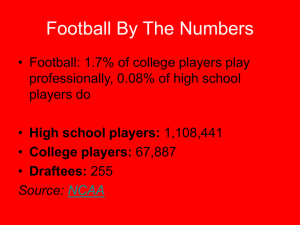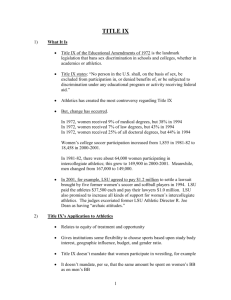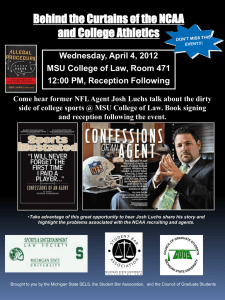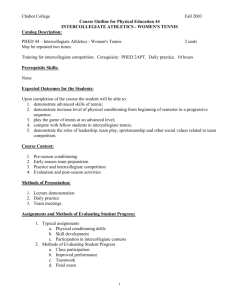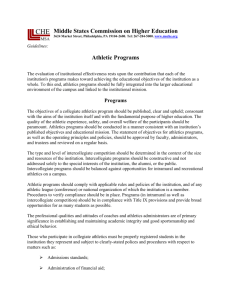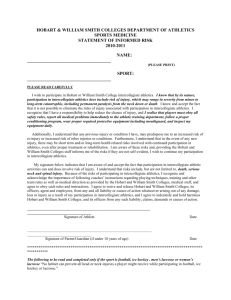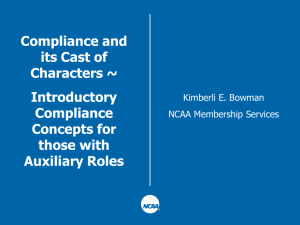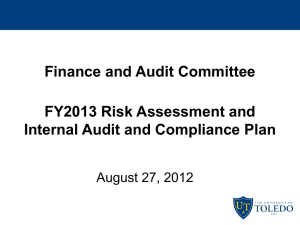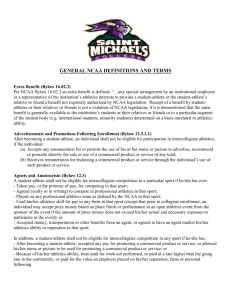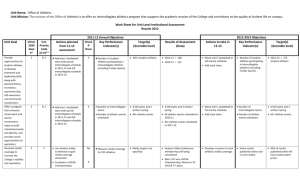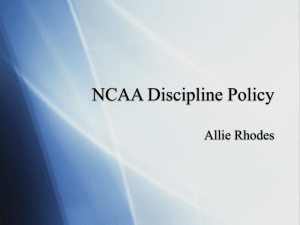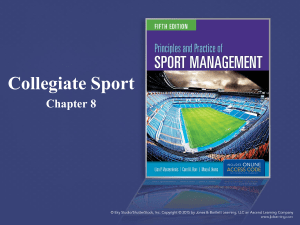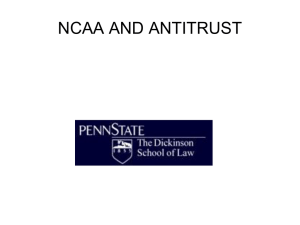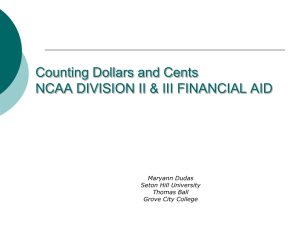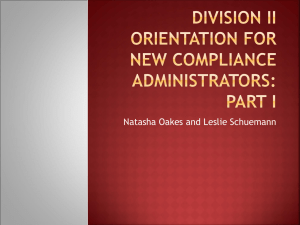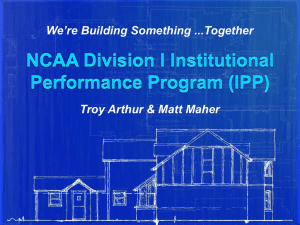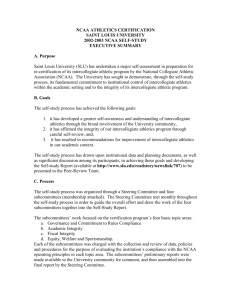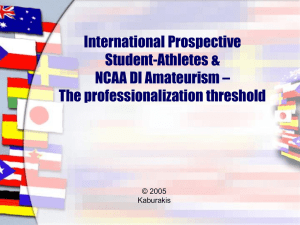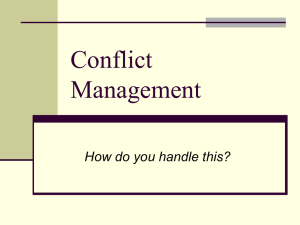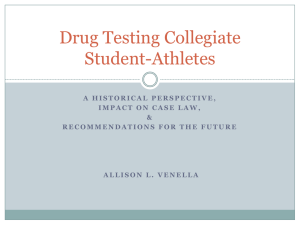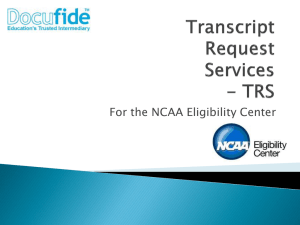Paying Players - Penn State Law
advertisement
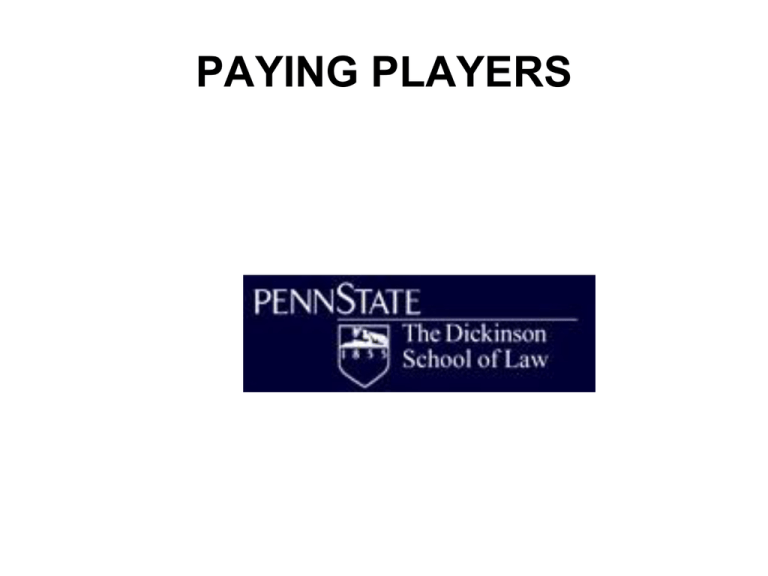
PAYING PLAYERS NO AGENT RULE Suppose Joey DeBernardis, who chose to attend Penn State despite being drafted in the 38th Round by Florida, is drafted again by Florida after his junior year • What can he do in negotiating with the Marlins, while still preserving his college eligibility? Erie Co. Judge’s Ruling • NCAA breached contract because rule is contrary to public policy of Ohio • NCAA breached contract because rule is arbitrary and fails to achieve clear line of demarcation between pros and amateurs Agree? How does an arbitrary rule breach Oliver’s contract rights? Framework for player restraints as set forth in Oklahoma Regents case 1) NCAA restraints not per se illegal, although they involve competing college programs, because extensive arrangements among teams necessary for competition in college football to exist 2) NCAA unreasonably restrains trade where result is prices higher, output lower, and both unresponsive to consumer demand 3) Under rule of reason, NCAA then has “heavy burden” to justify restraint 4) Court accepts that competitive balance is a legitimate goal, but challenged rule must be ‘tailored’ to accomplish goal 5) rejects distinction, at least for commercial restraints, between college and professional restraints based on non-profit status or non-commercial goals NO DRAFT RULE • Banks majority: rule minor addition to general rules and is “vital” • Dissent: unreasonable agreement to force player to choose between draft and eligibility Who is right? If these rules are illegal, what about academic progress requirements? NO AGENT/ NO DRAFT JUSTIFICATION Although, as McCormack observes, NCAA doesn’t have to “distill amateurism to its purest form,” in light of all these exceptions, is Banks correct that the no-draft/no-agent rules is “vital” to protect the "unique product" of college athletics? More generally, do the rampant violations of NCAA rules, with no apparent commercial detriment, demonstrate that consumers don't find amateurism to be a element that gives college football its distinctive popularity? Mitten & Ross Regulatory Solution • Lots of problems with big-time intercollegiate sports – Misallocation of $ from academics to athletics – Lack of real education for many football and basketball players, although most won’t have pro careers – economic exploitation of elite players Antitrust Law Regime Not Optimal Solution Cross subsidization of women’s and non-revenue sports not a procompetitive economic justification, despite social benefits Remedy economic exploitation of a few elite players at the expense of most others Piecemeal antitrust analysis of specific NCAA rule or application will not broadly resolve systemic problems inherent in the production of intercollegiate athletics Prohibits unreasonable conduct, but doesn’t require reasonable conduct or socially optimal policies (e.g., ensuring football and basketball players receive educational and other non-economic benefits) Proposed Congressional Intercollegiate Athletics Reform Legislation 1. Mandatory substantive requirements: a) at least a 4-year athletic scholarship with limited university termination rights; b) medical care or health insurance for all sports-related injuries + scholarship extensions for injuries; and c) elimination of NCAA requirement that Division I universities operate ≥ 14 sports Proposed Congressional Intercollegiate Athletics Reform Legislation 2. Creation of an independent intercollegiate athletics oversight commission with the following features: a) authorization to propose non-binding rules regulating intercollegiate athletics originating of its own accord or with any intercollegiate athletics stakeholder; b) Congressionally required consideration along with adoption, rejection, or modification of specific proposals; and c) procedures providing transparency and access to all intercollegiate athletics stakeholders, including student-athletes and members of the public, akin to Administrative Procedure Act’s notice and comment requirements for informal rule-making. 3. A grant of antitrust immunity to the NCAA, athletic conference, or university for conduct taken in compliance with the Commission’s rules, provided that any intercollegiate athletics stakeholder allegedly harmed by one of these entity’s conduct in compliance with the subject rule(s) may seek independent arbitral review to ensure the rule(s) have a reasoned basis consistent with the public interest. Commission Should Consider Additional Regulations • paying players up to 25th percentile of student-body income from family or other sources • mandatory remedial assistance to at-risk students • add’l scholarships to returning students • incentives to graduate • pooled revenues as financial incentives to schools with high graduation rates

